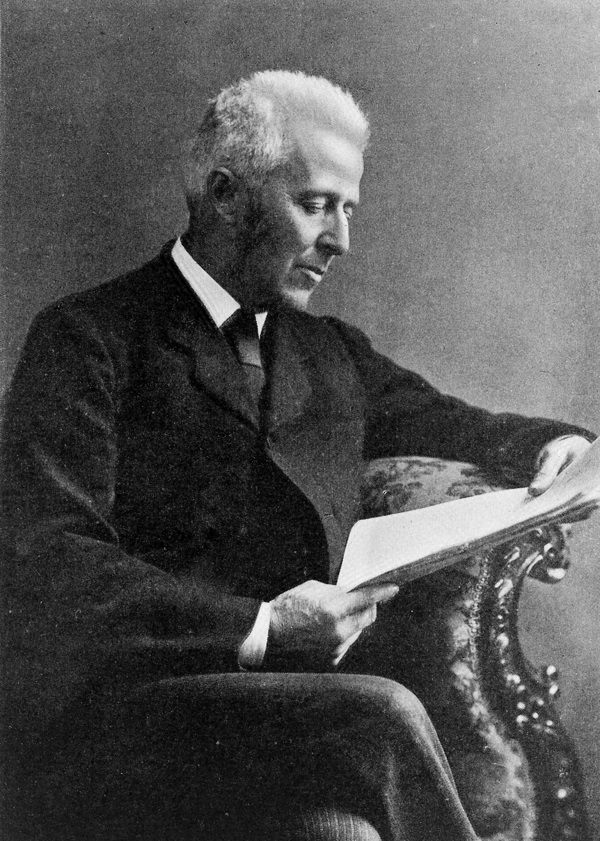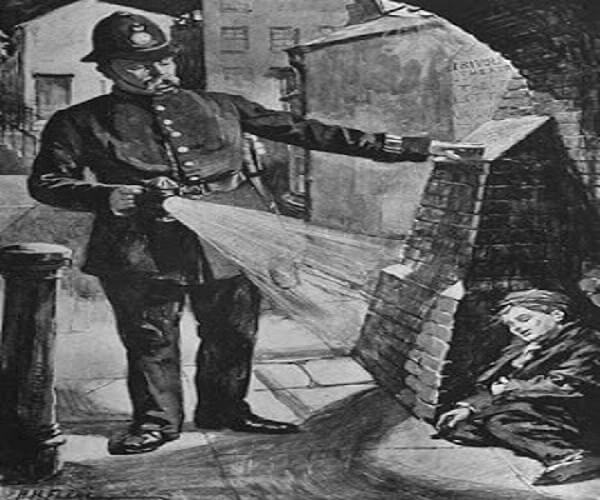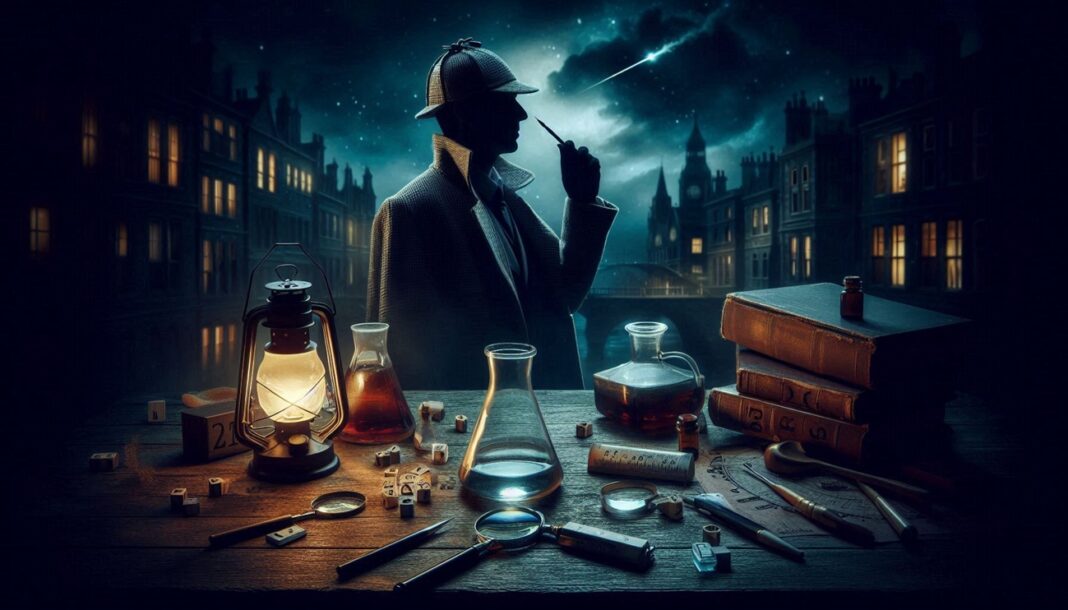“You will not apply my precept, he said, shaking his head. How often have I said to you that when you have eliminated the impossible, whatever remains, however improbable, must be the truth? We know that he did not come through the door, the window, or the chimney. We also know that he could not have been concealed in the room, as there is no concealment possible. When, then, did he come?” – Sherlock Holmes in The Sign of the Four, Ch. 6 (1890)
Through books and television, we have been captivated by this flamboyant character as we watch him go from case to case finding and apprehending the criminals of his day, with his trusted sidekick Dr Watson. Then we settle back down satisfied with our adventure into the world of fiction, but the character of Sherlock Holmes is not entirely fiction. He was based on a dazzling medical surgeon who entertained his students with his observational abilities.
He was based on the work of Dr Joseph Bell. When we think of forensics science, DNA evidence, fingerprint analysis, and blood spatter patterns spring to mind, and while accurate these are the modern-day advancements we have seen within forensics in most recent years.
There is a great deal of history behind these technological developments encompassing much more than test tubes, computer-aided modeling, and scientists in lab coats.
The Birth of Forensics Science – Dr. Joseph Bell
Dr Joseph Bell was a medical scholar and surgeon, lecturing at the University of Edinburgh Medical School in the late 1800s. He is the man to who the birth of forensics science is attributed, using scientific observation techniques in his work and bringing this aspect into crime investigations for the first time.
It is reported that Dr. Bell was involved in a number of criminal investigations, helping police by using his insights through observation to give them information about the victim of crime, a crime scene, and who may be responsible.
Some reports suggest he was involved in the investigation hunting for Jack the Ripper in 1888 in London. Rumour has it that Dr. Joseph Bell examined the crime scenes of the Ripper murders and used his observations to come up with the name of a suspect. Sealed in an envelope and sent down from Scotland to London, nothing more is reported of this suspect. However, just afterward the Jack the Ripper murders ceased never to be restarted again.
The technical definition of forensics science is the gathering of information and data about past events that can then be presented in a court of law within a criminal investigation. In early criminal investigations, a confession from a perpetrator or an eyewitness report were the tools relied upon and required for any chance of solving a crime.
Dr. Joseph Bell was obsessed with observation and how through closely observing the details of a person’s medical symptoms, an accurate medical diagnosis could be made. He also felt this technique was applicable in crime investigation in order to discover facts and information about a crime that many others may have missed.

His detailed knowledge of the human body, the effects of manual labor, disease, and of human behavior allowed him to quickly spot signs which could inform him of an individual’s occupation and lifestyle. He was by all accounts a slightly eccentric individual who enjoyed his work immensely.
He was a lecturer of great acclaim, exciting his students with tricks and demonstrations to test their concentration and highlight the subtle signs they had overlooked.
This notion of observation, key features, behaviors, and traits that could tell us something about an individual was a more analytic approach based on scientific theory. Bell’s work opened people’s eyes and minds to what is possible.
By applying scientific principles to crime scenes a great deal of valid information could be gained, moving a criminal investigation towards cracking a case and apprehending a suspect.
The introduction of such forensic methodology meant that evidence out-with testimony of victims or witnesses could now be obtained in order to support or refute such verbal reports. Furthermore, fingerprints, blood, hair samples, and even the murder weapon could hold vital clues as to what had happened to whom, when, and at whose hand.
If the idea of close observation and picking up on fine detail and subtle signs had not been demonstrated by Dr Joseph Bell, it is questionable where forensic science may stand today.
The Phenomenon of Sherlock Holmes
Dr. Joseph Bell’s popularity and the idea of using scientific forensic techniques in crime-solving was further progressed through the fictional works and the character of Sherlock Holmes.
The writer of the hugely popular Sherlock Holmes fictional books, Arthur Conan Doyle was Dr Bell’s student and worked with him for a number of years, witnessing his behavior and his methods.
He claimed the developing character of Sherlock Holmes was based in part on Dr. Bell and his techniques of observation.
The Sherlock Holmes series published between 1887 and 1927, while works of fiction, encouraged interest and intrigue in this type of investigation.
Early Forensics – The Flies and the Sickle
Before the work of Dr. Joesph Bell, the earliest recorded case of the application of forensic science in solving a crime was in 1247 in China. Police were investigating the stabbing of a victim in the street. By closely examining the stab wounds and comparing such patterns to various weapons, the type of murder weapon, in this case, a sickle, was able to be determined.
Furthermore, the coroner, in this case, used observational techniques at the crime scene to speculate on possible motives for the crime. No personal items were removed, ruling out the idea that robbery was a motive.
Lining up his suspects with their sickles at their feet, the coroner searched in vain for blood stains. Unable to see any with the naked eye he waited and soon enough a number of flies homed in on one particular sickle, attracted by the minute blood specks that remained on the weapon. This act highlighted to the by now rather bemused coroner that this was indeed his murder weapon held by the perpetrator himself, which was closely followed by a full confession to the crime.
The findings and solution, in this case, were reported in a handbook for coroners “The Washing Away of Wrongs” in 1247 and was used as a guidebook for coroners across Europe for many years.
The Development of Forensics Science
In the early 16th century as increasing incidents of death by foul play and violent means were being seen, an interest in the cause of death began to emerge. By applying medical knowledge of body structure, organs, and functions and an understanding of how the body reacts to trauma, a deeper understanding of how such incidents can result in death and what may or may not have been involved began to emerge.
When trying to solve a crime in this era, establishing a motive and a clear link between the victim of crime and the person responsible was the main objective. In the days before computer technology and data analysis for testing materials and fluids, police investigators had to rely on what they could observe from the crime scene and what reasoning they could find for a crime to be committed.

By the 18th century, increasingly logic was being applied and used proactively in criminal investigations. Matching measurements and observational information found at crime scenes with outside information. For example, what industries were in the area, which profession wore the type of footwear which may leave such impressions on the earth, the whereabouts of individuals, and the times of day crimes occurred all started to be incorporated.
A logical line of thinking created new leads in a case, areas to follow up and investigate, and filling in the gaps. Asking such logical questions and actively seeking the answers was leading police to their suspects and ultimately solving crimes.
As the years rolled on scientific discoveries and methodology began to emerge. Each one follows from another adding to the repertoire of tools available to crime investigators.
Fingerprint analysis, for example, was hailed a breakthrough when in 1880 Henry Faulds, a Scottish scientist, realized that each individual had a distinctive set of fingerprints belonging only to them and these could be used as a basis for identification. In that same year, he used his methodology to eliminate an innocent suspect from a murder case due to fingerprint evidence.
The Bertillon System of Identification
In 1879 in Paris, police officer Alphonse Bertillon is credited with being the first person to examine the human body carefully at crime scenes, taking measurements and notes, a practice termed anthropometry.
By comparing the measurements of different body parts for different individuals it was believed this could be used as a method of identification and create a detailed description of a person and their features. Now commonly referred to as the Bertillon System, it was one of the first techniques to be accepted as a scientifically based method of criminal investigation.
“Every measurement slowly reveals the workings of the criminal. Careful observation and patience will reveal the truth” – – Alphonse Bertillon
An excellent article from the US National Library of Medicine shows how the Bertillon system was used to identify offenders and murder scenes. Officers began to search through previous criminal records by adding an individual’s measurements to make future identification easier. Detailed photographs of the head and face were introduced and included in a suspect’s records.
The Bertillon System was introduced in the United States in 1887 and quickly became the preferred method for criminal identification, adopted by Europe and widely used until the early 1900s when fingerprint evidence and the discoveries of Henry Faulds really began gaining steam.
As time has gone on, more advanced techniques replaced the Bertillon methodology however its principles are still in place, profile photographs and standard notes about appearance and body shape and size and now routine within a suspect’s details.
In 1896 the first fingerprint identification system was introduced within Europe led by Sir Edward Richard Henry and criminal investigations started to include such forensic techniques with fingerprinting being introduced in Scotland Yard in 1902.
The Future of Forensics
Today, modern forensics science dominates police investigations and criminal proceedings. The advancement of technology such as computers has greatly enhanced the capabilities of science.
The disciplines within forensics science have expanded rapidly in recent years now including anthropology, digital and multimedia sciences, pathology and biology, criminalists, and psychiatry and behavioral sciences. A good detective is one who can find the missing links in an investigation using the small details and logical thinking and all of these various scientific resources to solve the puzzle. As science continues to progress, further discoveries will undoubtedly be made adding to the options available within a criminal investigation.
The influence of Dr. Joseph Bell in advancing forensics science should not be underestimated. He was a man with vision and intense interest in his field, inspiring hundreds of students and in playing a role in the resulting Sherlock Holmes phenomenon. Dr Bell died in 1911 and his grave can be found at the Dean Cemetery in Edinburgh.




Execellent article,But, i, to much of my dislikeness, i must contradict on one point?, madam administrator, the first disciplined practise of the subject didn't occured in china, i agree, that the Chinese understanding of the subject was a boon to Europa, but,but,with much reluctant immodesty???, i have to declare that they were not the first…????? Ancient Medical Texts of India
I ) Kautilya's Arthashastra [ 250-300 B.C.]________
states that murder can be caused by
1) 4 ways of stopping the breathing
{a) strangling, b) hanging, c)asphyxiation, d) drowning
2) 3 ways of physical injury
{a) by beating b) by stabbing c) by throwing from a height
3) or Poisoning
{ by bites of insects, snakes, or by narcotic drugs or by other poisens}
Arthashastra gives a list of forensic evidence, for establishing, the cause of death.Some of them are÷
1) If death is caused by poisening , the undigested parts of the meal was tested by feeding it to birds.
2) cases of suicide were investigated to rule out the
post-mortem injuries.
3) similarly on findinf a dead/ murdered stranger's body, his personal belongings such as clothes, his dress and ornaments were examined.
The book describes the neccessity, of autopsy, in establishing the cause of death, after smearing the body with oil to bring out bruises, swellings and other injuries..
II) Agnivesa Charaka Samhita [7th century B.C.]_____________
Gives detailed description of various poisens, symtoms, sighns and treatments if poisening.It is also many more things than that , ofcoarse, shall explain on a better day..
III) Shusruta's Shusruta Samhita [ 200-300 A.D.]___________
The chapters pertaining to forensic science/ medicine, were so carefully written that they are no mark inferior to that of our modern understanding of the subject. It also contains a separate chapter dedicated to toxicology, classifying poisens in to 1) plant products 2) animal products 3) artificial products.
Snakes were classified and named. Not only symtoms, sughns and treatments of poisening described in detsil but also the methods of administration of such poisens, character of the poisener and examination of suspected poisenous materials. A poisener person could be known from his behaivour and movements-he will not answer to questions, will keep silent talk irrelevantly and so on.Poisons were administrated through food, drinks tooth picks, snuffs, smokes, surmas etc.. understanding of the weapon/ weapons used for murder , the foreighn bodies, the sighns and symtoms they manifest in the body are also described….
There were more, after them…..But i think that, these are enough…
SOURCE: MODI'S MEDICAL JURISPRUDENCE & TOXICOLOGY
23rd Edition..
But at the end of thd day, it IS the Dr. Joseph Bell who can be considered as the father of our Modern Forensic sciences, it is because of him, science as a subject was properly introduced in our courts of law and we owe a lot to this great man. He is in a way responsible, for the first proper introduction of the subject in England and Europe, and reintroduction in Asia , mainly India in a more modern form, through the hands of the British Empire, but that is an another interesting story.?
Hi there, please do feel free to contradict me especially if I have details incorrect, that is just fine! Thank you for highlighting this and giving so much information, really very interesting.
Clearly from these texts the understanding and practices of forensic science were in place and it is surprising how similar these details are to the practices of today. The level of detail included highlights the knowledge and understanding that was clearly available even all those years ago.
I do agree that Dr Joseph Bell was highly influential in our modern word in bringing forensic science into police criminal investigations and into the courts. I wonder where we would be now in this regard without his methods, examples and influence.